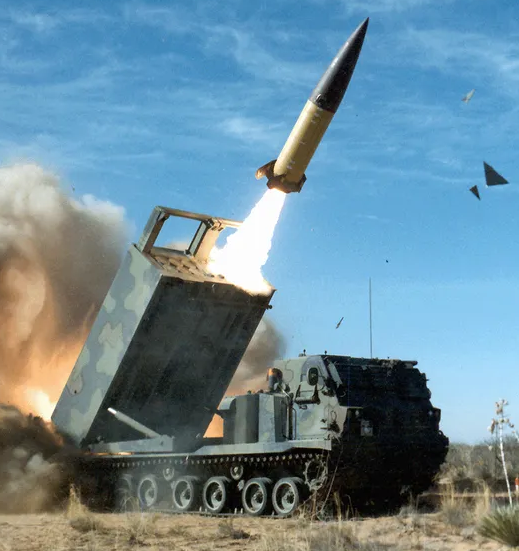BombOmOm
- 1 Post
- 27 Comments

 3012·4 months ago
3012·4 months agoMaking it harder for firearm education, use, handling and entertainment videos to be on the most popular video platform is not a positive step. The resources people have to safely handle and use firearms has now diminished.

 14·5 months ago
14·5 months agoRyzen laptops which feature capable integrated GPUs serve light and medium gaming tasks well. For heavy use, there are desktops, which is where the real power is. Portable systems like the Steam Deck are also hitting from the mobile side as well.
Gaming laptops have always been an extremely niche product and have gotten squeezed from all ends in recent years.

 82·5 months ago
82·5 months agoPentium D processors are pretty power hungry, so factor that into your thoughts. Also make sure you put a modern OS on it that is getting security updates. It probably has Win XP or Vista installed which isn’t safe to connect to any network.
It should work fine as a router as long as you don’t enable any of the packet inspection features. For basic routing and firewalling for a home network it should be plenty powerful. I would personally put a small SATA SSD in it as the main drive and ditch the 90GB HDD.
As an additional idea, if you put a larger SATA drive or two into it you could make it a NAS.

 521·6 months ago
521·6 months agoYeah, that’s the issue with the argument of ‘just turn it off’. You can turn it off, then tomorrow there will be another thing to turn off (hope you were paying attention to the news to find out what it was!). The next day an update will come along and turn half of them back on. The following the mental script you made to will stop working because they moved half the settings, etc, etc, etc.
It’s a never ending battle as Microsoft fundamentally does not respect their paying users. Microsoft could add a top-level toggle box to automatically disable bloatware, telemetry, and the privacy nightmare that is OP’s story about how the OS records everything you do, but they don’t have this. They don’t want you turning this stuff off, they don’t respect you.

 6·6 months ago
6·6 months agoI have not personally experienced a dropout with a SMR drive. That is from the reporting I saw when WD was shipping out SMR drives in their Red (NAS) lineup and people were having all kinds of issues with them. According to the article (below), it sounds like ZFS has the worst time with them. WD also lost a class action suit over marketing these as NAS drives, while failing to disclose they were SMR drives (which don’t work well in a NAS).
We want to be very clear: we agree with Seagate’s Greg Belloni, who stated on the company’s behalf that they “do not recommend SMR for NAS applications.” At absolute best, SMR disks underperform significantly in comparison to CMR disks; at their worst, they can fall flat on their face so badly that they may be mistakenly detected as failed hardware. Source

 141·6 months ago
141·6 months agoAs you are looking for bulk data storage, the drive’s speed isn’t of too much concern. A 5400RPM drive is plenty.
If you are looking to put this drive into an array with other drives, make sure you get a CMR drive as SMR drives can drop out of arrays due to controllers finding them unresponsive. If a drive does not list it is CMR, it’s best to assume it isn’t. Seagate has a handy CMR chart, for example.
Additionally, if there are multiple spinning drives in the same enclosure, getting drives with vibration resistance is a good bonus. Most drives listed for NAS use will have this extra vibration resistance.

 231·7 months ago
231·7 months agoFor running an OS off a USB drive, I would recommend getting a USB to M.2 enclosure and putting an M.2 drive in it. This will give you better performance than any flash drive out there. The memory they put into normal flash drives is just slow slow slow for the use case of an OS.
Now, the only negative there is that is kinda expensive. If you really want to stick to a normal USB drive, maybe try this one out. But I would really like to stress that running an OS off a normal USB drive is going to be slow.

 2252·7 months ago
2252·7 months agoReally happy to see replaceable batteries! It’s a wear item and guaranteed to brick your device after a number of years if they aren’t replaceable.

 222·7 months ago
222·7 months agoThere are some decently priced drives available used on eBay and Mercari, but they tend to get snatched up pretty quickly. Official refurbs are probably your best bet if you don’t want new, I know B&H sells official refurbs.
The main issue is people think ‘I spent $200 on this, it still works, I’ll sell it for $150 used’ and don’t bother checking what is actually selling. Both eBay and Mercari have a sold listings filter, which is a great way for both buyers and sellers to figure out what things are actually worth.

 4·8 months ago
4·8 months agoUnlikely. The main issue comes with port forwarding, but you are locked out from doing that already. I say go for the triple NAT, put your own router after the ISP’s modem and then you have full control of your LAN.
I personally use an old self-built desktop running linux (TrueNAS and Windows also work). Getting a case with lots of drive bays is inexpensive. And it lets you do pretty much whatever you want with the NAS as it’s a full blown computer. I always found the prices for the purpose built NAS to be shockingly high.

 2·8 months ago
2·8 months agoThisin! Links to a few min overview of a Ryzen based PoE mini-pc.
https://lemmy.world/comment/7886685
Level1Techs just posted this: https://www.youtube.com/watch?v=GW4WyuGKsho

 1·8 months ago
1·8 months agoLaptop class CPUs can though. AMD Ryzen chips are useful all the way down to 15w. There is a post in this thread of a mini-PC with one and PoE. Real happy that exists.

 2·8 months ago
2·8 months agoI would be interested in this as well. The Pi certainly works and I am running one POE. But the Pi can be very limiting.
If you are converting something, be aware PoE has a power budget of 15w and PoE+ has 30w. Though PoE++ can do 100w, I have not seen many switches with that.

 101·10 months ago
101·10 months agoYeah, for TrueNAS it would be a mirrored ZFS array with said two drives, functionally the same.

 111·10 months ago
111·10 months agoYour basic components will be an old desktop you have lying around and two hard drives. Put the two hard drives in RAID 1 (mirroring) set with either a network share and/or FTP access to add/remove stuff from the array. The drives optimally should be the same size, but if they aren’t that is OK, the amount of redundant space available will the the size of the smaller of the two drives.
Depending on what you have lying around this might not cost you anything. However, if you are going to spend money anywhere it should be on the drives themselves. You probably don’t need anything fancy, just a pair of 5400RPM HDDs that are large enough to hold your data, plus some room to grow.
You can use any OS of your choosing as basically everything supports the requirements. Linux, Windows, and TrueNAS come to mind as viable options. You may or may not want a third, tiny, drive just to boot the OS, particularly for Windows, as it can make things easier. I personally use Linux for my basic NAS with SFTP access.
Myself, I don’t. Being a landlord has quite a bit of risk from awful tenants as well as quite a bit of effort to make it work well. I have a job, don’t want another, and don’t want the additional risk; my investments are thus elsewhere.
You have abysmal credit from not paying your bills and can’t get a loan? That is certainly a benefit of renting, don’t need a loan.
You know what your tenant get for paying your mortgage? Jackshit.
If you are truly getting nothing by renting, buy a home instead. If you respond by saying ‘but I don’t want to, or can’t because of x’, that is what you are paying for as a renter.

The biggest thing is you have changed a random write to a linear write, something HDDs are significantly better at. The torrent is downloading little pieces from all over the place, requiring the HDD to move it’s head all over the place to write them. But when simply copying off the ssd, it keeps the head in roughly one place and just writes lineally, utilizing it’s maximum write speed.
I would say try it out, see if it helps.
Also, if the HDD is having to do other tasks at the same time, that will slow it down as the head can only ever be in one place.